 W
WThe 20 euro cent coin (€0.20) has a value of one fifth of a euro and is composed of an alloy called nordic gold in the Spanish flower shape. All coins have a common reverse side and country-specific national sides. The coin has been used since 2002, with the present common side design dating from 2007.
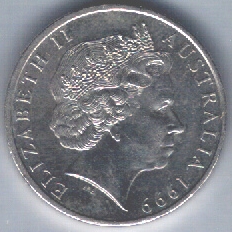 W
WThe Australian twenty-cent coin of the Australian decimal currency system was issued with conversion to decimal currency on 14 February 1966, replacing the florin which was worth two shillings – a tenth of a pound.
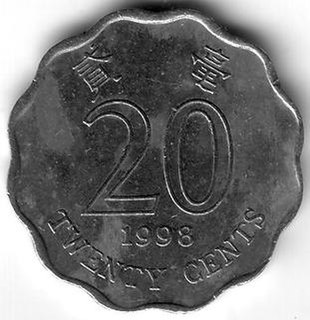 W
WThe twenty-cent coin is a coin of the Hong Kong dollar. It is the second-smallest denomination coin in Hong Kong. There have been two different periods of usage for a twenty-cent coin: the first, round twenty-cent was issued from 1866 to 1905, and the current scallop-shaped coin was introduced in 1975.
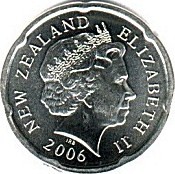 W
WThe New Zealand twenty-cent coin is the second-lowest-denomination coin of the New Zealand dollar. The 20-cent coin was introduced when the New Zealand dollar was introduced on 10 July 1967, replacing the New Zealand florin coin. Its original reverse of a kiwi was changed in 1990 when the image was moved onto the one-dollar coin. In 2006 its size was reduced and its edge altered to a Spanish flower as part of a revision of New Zealand's coins, which also saw its alloy become nickel-plated steel.
 W
WThe first known pattern for the Newfoundland 20-cent piece is a bronze strike with an obverse derived from a New Brunswick coin. The reverse is from the die for the 1864 New Brunswick 20-cents. The twenty-cent denomination was very popular in Newfoundland and was minted on a consistent basis throughout the reign of Queen Victoria. Over the years the piece became unpopular with Canadians as it was easily confused with the Canadian 25-cent piece, which was similar in size and shape. Pressured by Canada, the government replaced it with a twenty-five cent coin during World War I.
 W
WThe Philippine twenty-centavo (20¢) coin was a denomination of the Philippine peso. The one-fifth (1/5) peso was introduced by both the Spaniards and the Americans during the colonial era of the Philippines. It was replaced by a banknote of the same denomination introduced alongside the establishment of the Central Bank of the Philippines in 1949 and it was replaced by the twenty-five centavo coin.
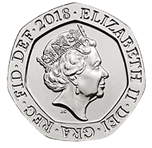 W
WThe British decimal twenty pence (20p) coin – often pronounced "twenty pee" – is a unit of currency equal to 20/100 of a pound sterling. Like the 50p coin, it is an equilateral curve heptagon. Its obverse has featured the profile of Queen Elizabeth II since the coin's introduction on 9 June 1982. Four different portraits of the Queen have been used; the latest design by Jody Clark was introduced in 2015. The second and current reverse, featuring a segment of the Royal Shield, was introduced in 2008.
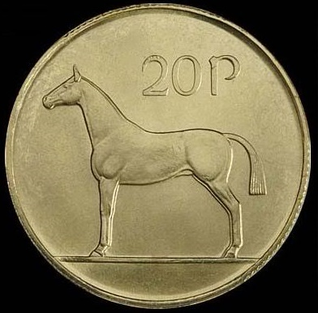 W
WThe twenty pence (20p) coin was a subdivision of the Irish pound. It was introduced on 30 October 1986. It was the first Irish decimal coin of a different size to the corresponding British coin, as the Irish pound had not been pegged to the British pound since 1979. Its last issue was in 2000, two years before Ireland withdrew its pound for the euro.
 W
WThe American twenty-cent piece is a coin struck from 1875 to 1878, but only for collectors in the final two years. Proposed by Nevada Senator John P. Jones, it proved a failure due to confusion with the quarter, to which it was close in both size and value.
 W
W W
W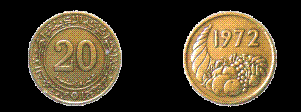 W
W W
W W
W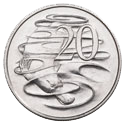 W
W W
W W
W W
W W
W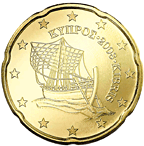 W
W W
W W
W W
W W
W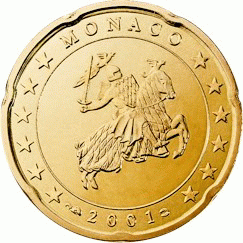 W
W W
W W
W W
W